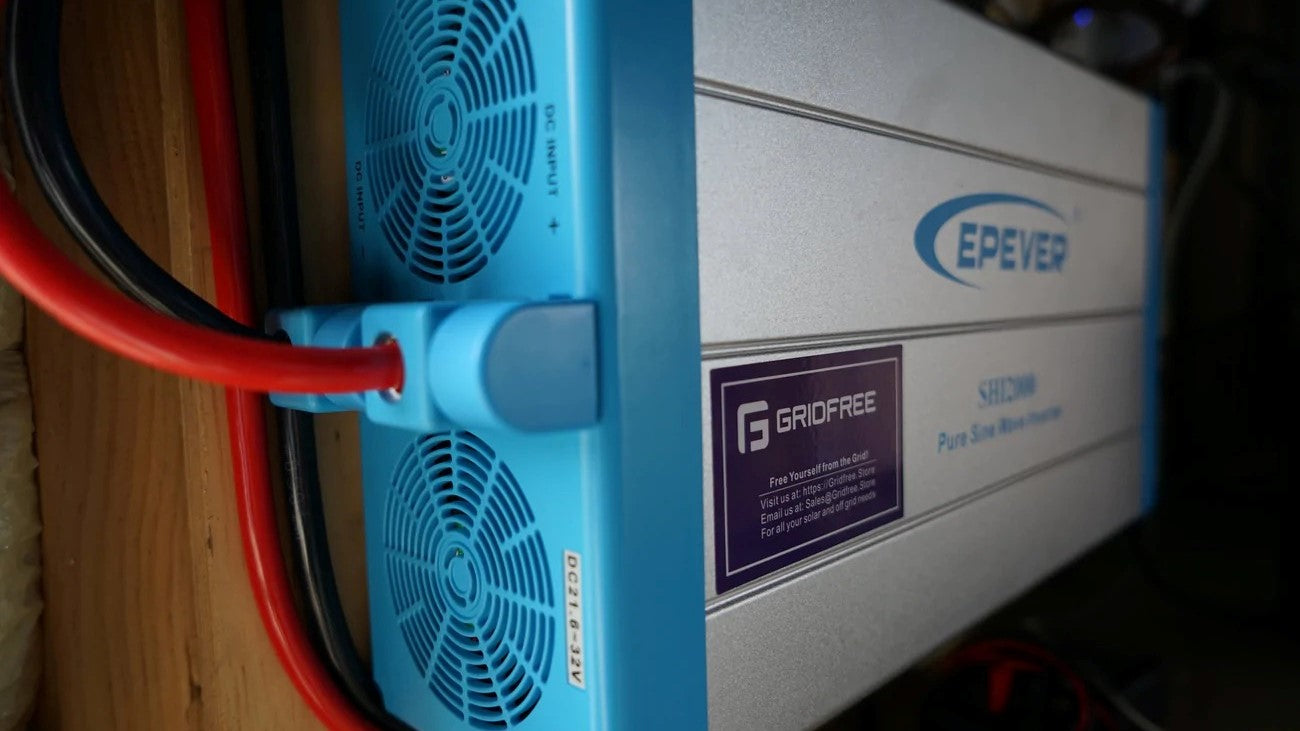The inverter is one of the four essential components in an off-grid solar system. The sole purpose of an inverter is to convert the Direct Current (DC) power that comes from your solar panels and batteries into Alternating Current (AC) power. AC power runs most household appliances, and most inverters come with a AC outlet that you can plug a powerboard into directly (to run your appliances), as well as a wired connection (so that you can wire it into your switchboard).
All our inverters support 220-240V output connections, which is appropriate for use in New Zealand, but not necessarily other parts of the world (for example, US uses 110Volts). It is important for the input voltage of your inverter to match the output voltage of your battery bank e.g. 12V, 24V, and 48V.
How do you choose the right size?
You will match your energy consumption with your inverter’s ability to supply Continuous power and Peak power.
Continuous power: This is what the inverter must supply on a steady basis, and this consumption is usually much lower than peak power. For example, if you’re watching TV for an hour the usual power needed would be roughly 300W, supplied continuously.
Peak (Surge) power: Peak power means the maximum power your inverter can supply for a short amount of time. The surge is typically up to double the continuous load, and rated for anywhere from a few seconds to a few minutes. Some appliances will require a large amount of power for a short time (such as toasters, microwaves, blenders), but then revert to a lower continuous draw.
So what size Inverter do you need? Hybrid or Standalone?
The size of the inverter you’ll need is dependent on what appliances you are going to be running on it. Adding the respective wattages of the devices you’ll be using will give you a good idea of what size of inverter will best suit your system. For example, if you’re going to be running a TV (200W), fridge (500W), and hair dryer (1000W) simultaneously, you’ll need an inverter that supports 1700W continuous draw (unless you want to constantly be switching things off and on), so we would recommend getting a 2000W inverter.
An inverter should also be matched to your battery storage - one with too high of a continuous draw may allow you to inadvertently drain your batteries very quickly.
If you have access to mains power, or a diesel generator, you may choose to instead get a hybrid inverter. A hybrid inverter is a charge controller, inverter, and battery charger all in one, as it comes with an AC input allowing you to easily charge the batteries from a generator when they're low, due to a lack of sunlight or heavy usage.
How did we spec our kits?
For our ‘Weekend Warrior’ Kit and the ‘Tiny House’ Kit, we use the SHI2000 (2000W) Epever Inverter, as it can handle most of the household appliances you will likely be using, such as a TV and refrigerator, and is appropriate for the battery storage.
The ‘Bach’ Kit and ‘Freedom’ Kit both come with the SHI3000 (3000W) Epever Inverter, which is surge rated up to 6900W, so you can run a lot of household appliances without having to worry about what your inverter can handle. This makes it perfect for full-time off-grid living.
The 'Lifestyle' Kit comes with a 5000W Growatt inverter, which is surge rated up to 10000W, meaning you pretty much won't ever have to think about what you can run.
View our selection of standalone Inverters HERE, and our hybrid inverters here.


